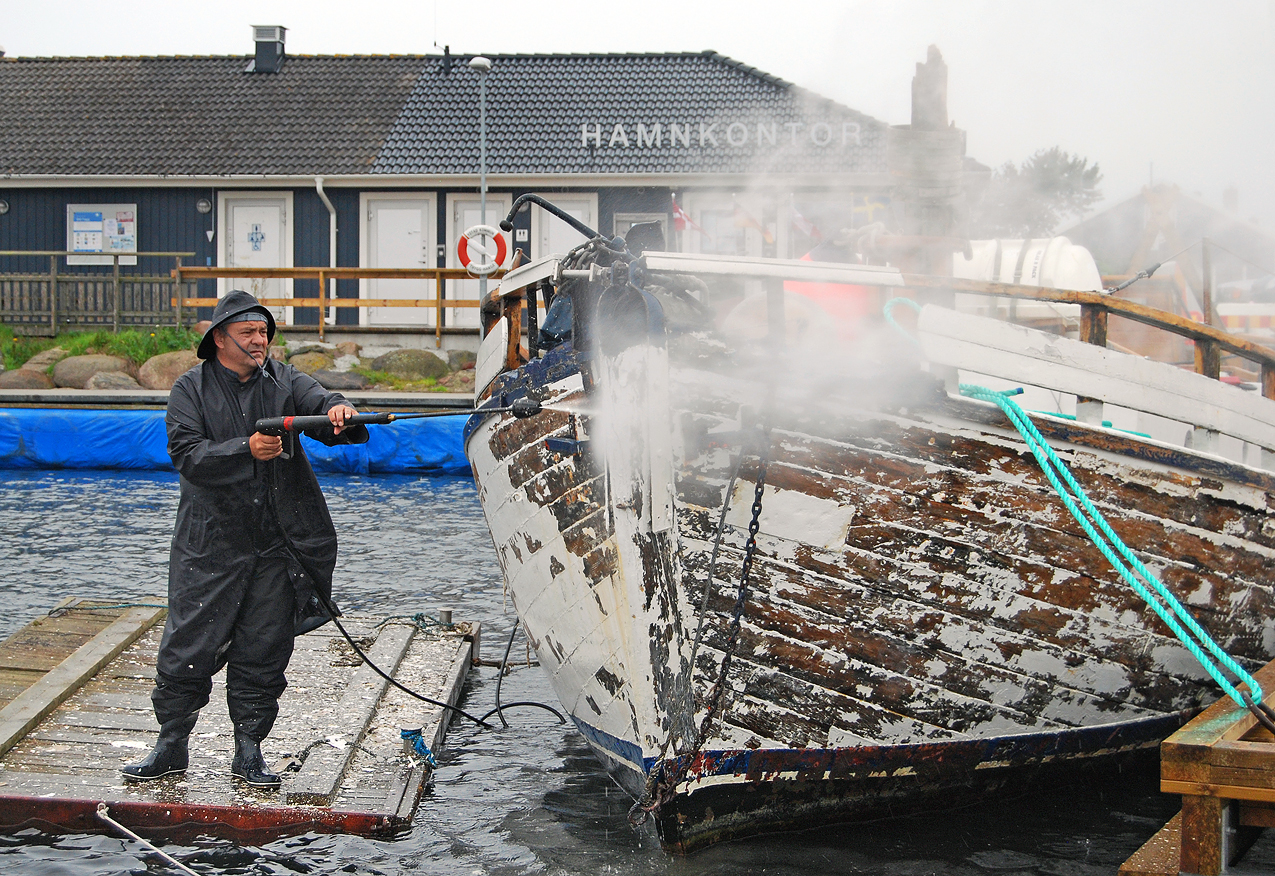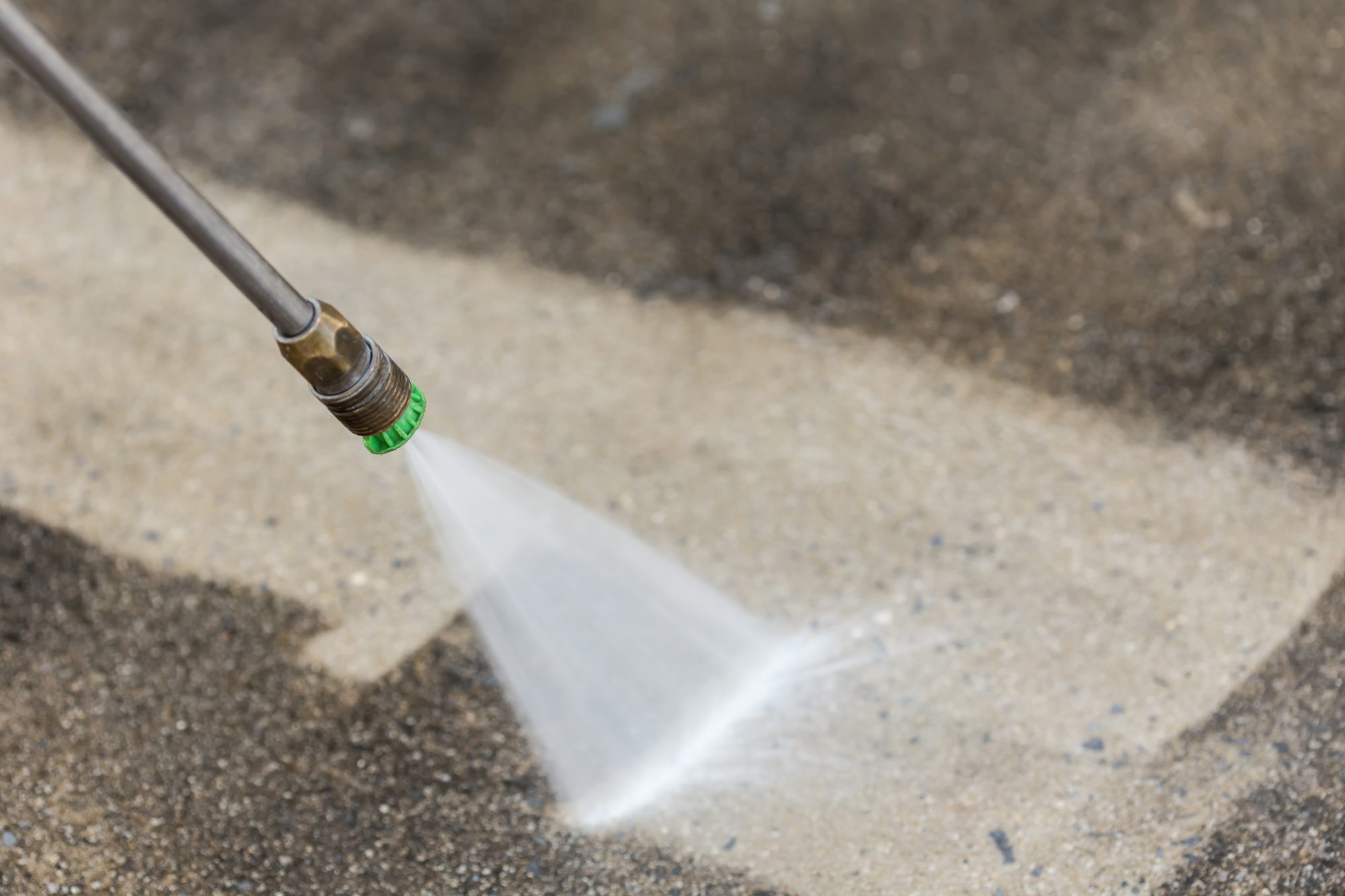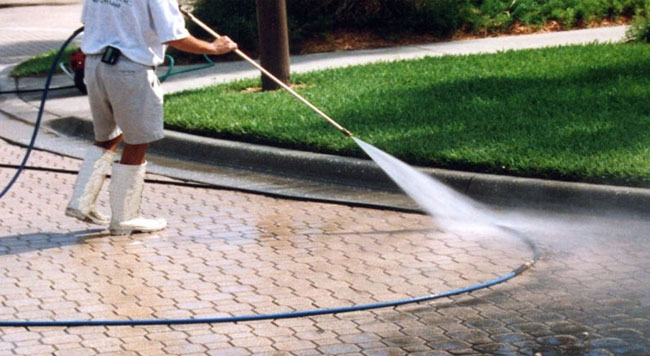Getting My Pressure Washing To Work
Table of ContentsThe Ultimate Guide To Pressure WashingPressure Washing for DummiesAll about Pressure Washing
Due to the fact that the water is taking a trip fast, it strikes the filthy surface with high kinetic power, knocking dust as well as dirt away like a consistent rain of little hammer blows. It's only water, however, so it doesn't harm most difficult surface areas. Having claimed that, it's a good concept to check a pressure washer on an inconspicuous location before you start work to make certain it does not hurt the surface area you're cleansing.



Gas engine models are excellent if you're working outside in places where an electrical energy supply is tough to find (or where a long routing wire would be hazardous or inconvenient). The electric motor or engine is designed to power the water pump. Photo: Although domestic stress washers are commonly powered by electrical power, bigger ones are often driven by little gas engines and produce substantially more powerful water jets. It's a bit like a hand-operated ground-water pumponly it's driven at high speed by the electric motor (or gas engine) rather than your hand. When the engine pulls the pump one way, it sucks water in from the tap; when it presses the pump the various other means, the water squirts out in a high-pressure jet.
High-pressure tube: This is television that goes out from the washing machine to whatever cleaning accessory you have actually made a decision to make use of. A regular little tubing wouldn't be able to survive the high-pressure of the water streaming via it. High-pressure pipe is enhanced with cable mesh as well as has two or even more layers of high-density plastic.

More About Pressure Washing
Image: The trigger gun from a Krcher stress washing machine. The enhanced, high-pressure hose pipe adds inside the plastic case, through a shutoff, and also out of the open upright the Full Article right. Some stress washers have extra features. Water as well as power are not an excellent mix, numerous power washers have ground-fault circuit breakers, likewise recognized as residual existing tools (RCDs), built right into the power supply to safeguard you in situation of an electrical mistake.


Right here's a quick recap of the basic principle: Detergent streams in from a bottle or container via one pipe. Pressure Washing. Cold water streams in from a tap (tap) through an additional tube and also is filtered heading in. An electrical motor or diesel motor powers the washing machine. Powered by the engine or motor, a water pump (impeller) draws in the detergent and water and also blends them together.
The pump squirts out the warm, soapy water via the strengthened, high-pressure departure pipe (and also whatever add-on is dealt with onto it). The slim nozzle on these add-ons helps to enhance the pressure of the water jet much more (Pressure Washing). The high-pressure of the jet not only cleans much more effectively but means you're squandering around 80 percent less water than if you made use of a common low-pressure hosepipe (which is more cost-effective if your water is metered).
That's a widely streamlined version; in truth, a stress washing machine is rather a bit more complicated inside. There are numerous pumps, for a beginning, and also for safety reasons quite a whole lot of focus is paid to maintaining the wet parts of the equipment totally protected from all the electric components.
I have actually tinted it and greatly streamlined the numbering so it's simpler to adhere to: Key external plastic real estate (yellow). Electric electric motor (red). Shielding plastic aluminum foil (blue): This ensures no water permeates inside the electric motor. Central shaft of the motor rotates around at broadband, powering the our website water pump. Reciprocating water pump (grey): The electric motor reverses (rotates), but the pump moves back and forth (reciprocates) to transform the water to a high-pressure jet.
Pump piston (orange): This is the chamber where water is pumped to high stress. Water pipe (blue): This is where water is trapped and also drained. You can find far more detail about all the components and just how they function by considering US Patent # 5,886,436: High-pressure cleaning apparatus (through Google Patents) by Josef Schneider et alia, Alfred Krcher GmbH & Co., provided March 23, 1999.
What Does Pressure Washing Mean?
Sadly, the dirt needs to go somewhere, informative post so think of where you're spraying and prepare the instructions in which you're functioning - Pressure Washing. Picture by Charles D. Gaddis IV thanks to US Navy. Stress washers can get points really tidy, but they have a few problems too: They use a great deal of water (generally 1.52 gallons per min).